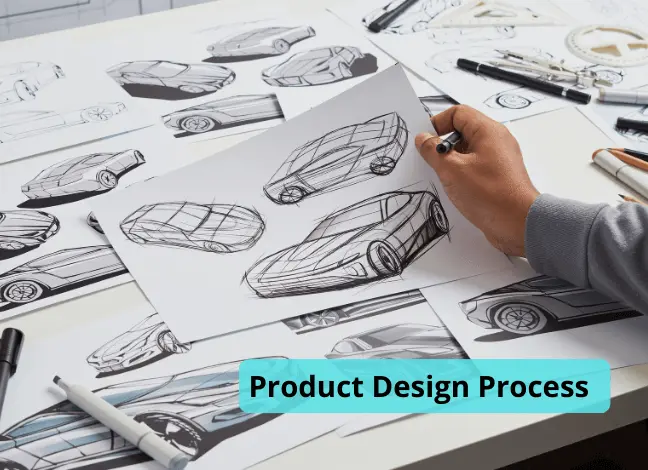"Balancing Form and Function: The Art of Elegant Product Design"
Balancing Form and Function: The Art of Elegant Product Design

Introduction
The process of conception, developing, and perfecting a product's external features to satisfy customer demands and corporate objectives is known as product design.
Importance of Product Design in Today's Market
- In an overcrowded market, product design is essential for drawing in customers and differentiating products.
- In the current competitive market, users expect designs that are both aesthetically beautiful and intuitive in addition to usefulness.
- Product design has the power to boost sales, improve customer satisfaction, and improve brand reputation.
- User experience, usability, and perceived value are all impacted by product design, which in turn affects how well a product does on the market.

- Form describes the aesthetic features, eye-catching appeal, and visceral reaction a product's design arouses.
- Function refers to a product's performance, usability, and practical aspects in order to achieve its intended goal.
- Harmonising these two elements results in goods that are both aesthetically pleasing and incredibly functional—a process known as "form and function balance."
- Finding this equilibrium is crucial to producing sophisticated product designs that appeal to consumers and satisfactorily address their needs.
Principles and Strategies for achieving elegant Product Design

Simplicity:
- Reduce superfluous complexity by distilling design elements to their most basic forms.
- In order to build user-friendly interactions, prioritise clarity and ease of use.
- Make sure that visual aesthetics, interactions, and messaging are all consistent across the board in all design aspects.
- Make sure that the user experience is fluid and harmonious across all of the touchpoints.
- Give research and testing top priority in order to better understand user needs, preferences, and behaviours.
- Iteratively incorporate user feedback into the design process to enhance and perfect the final product.
- Create goods that satisfy consumer needs and successfully carry out their intended purpose.
- To guarantee a flawless user experience, give usability and performance top priority.
- Give careful consideration to every elements of the design, such as the font, colour, space, and proportions.
- Take great care when crafting each detail to add to the product's overall elegance and coherence.
- A well-balanced visual hierarchy should direct users' attention and give priority to the most crucial information.
- Effectively employ contrast, scale, and whitespace to establish harmony and focus in the design.
- To produce visual balance, keep the scale and proportions of the various design elements harmonious.
- To achieve a pleasing look, make sure that the pieces are sized and positioned suitably in relation to one another.
- Choose materials and textures that improve the product's visual and tactile aspects.
- Think about the ways that various materials affect the product's usability, durability, and appearance.
- To make sure that users can quickly grasp and accept the product, aim for innovation while retaining familiarity.
- Add innovative features or ways to engage with the system that improve the user experience without being confusing or frustrating.
- Construct goods that make others feel good and establish deep ties with them.
- Think about how the product's whole experience, usefulness, and aesthetics all add to its emotional appeal.
Comments
Post a Comment